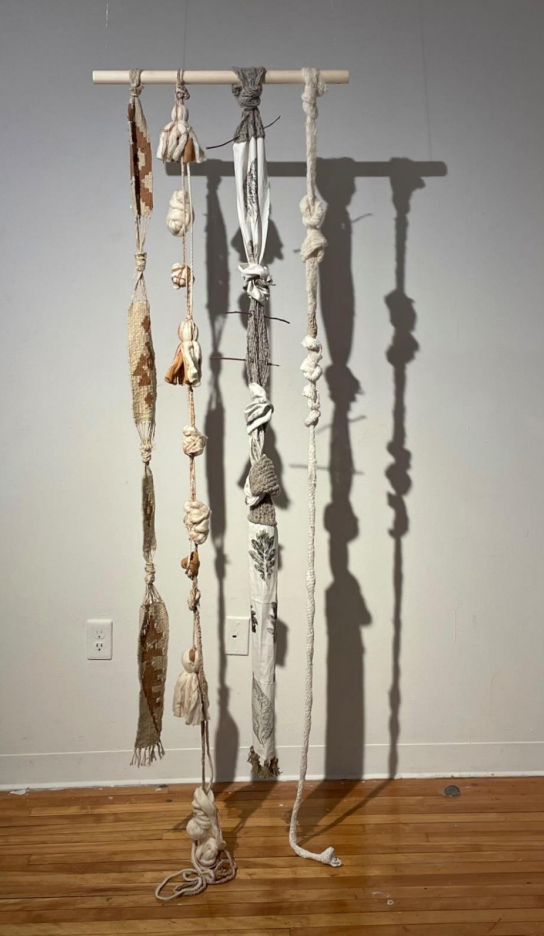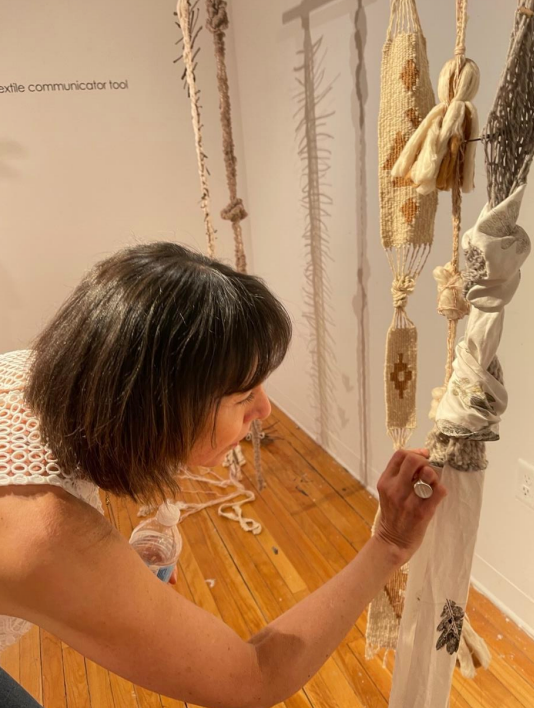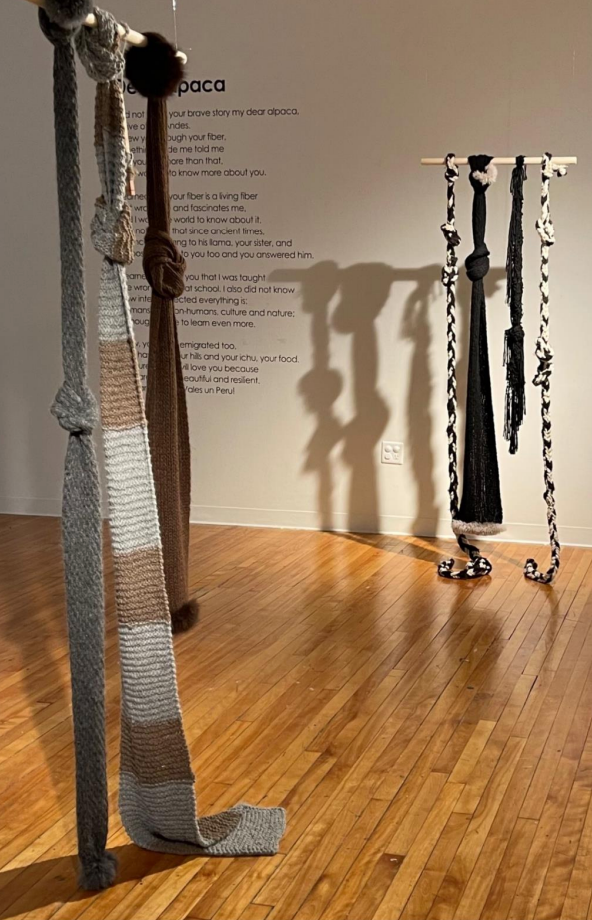Hortensia Reyes
More than Knots and Cords
More than Knots and Cords is an exhibition supported by this thesis paper, that explores the possible friction that could generate incorporating a traditional artisanal material, which is made following ancestral production techniques and has a historical past, into an industrialized environment in a contemporary installation. This possible friction could be caused by the fact that materials and the environment where they will be installed come from different cultures and represent different spaces and times: past and present, traditional and contemporary. This could extend to even how materials are made, craft or art.
Through autoethnographic research, the materiality of Peruvian alpaca fibre and the history of ancient Peruvian textiles, this thesis explores alternative views of the past to confront the official history told from a western perspective. The distorted facts in which the official history is based create confusion in the search of an identity and a better understanding of a society. Through literature review on recent theoretical frameworks like new materialism, active matter, and systems view of life, a convergence is found with traditional views of the world like the Andean cosmovision, a confluence in the way they perceive materiality, sustainability, and ethical respect of the environment. This is seen as a convergence between old and new, traditional and contemporary.
The concept of knot is introduced, which could represent tension or conflict, pact or agreement. In the exploration described above, some knots are untied, while new knots are created in an ongoing process.
The exhibition presents the khipu, a pre-Hispanic artifact made of knots and cords, as a symbol of resistance, a metaphor for the decolonizing effort. The exhibition also includes an educational component to explain the Andean cosmovision to the broad public and to show labour during the creation process, which includes experimentation with some pre-Hispanic techniques rescued by archeologists.




